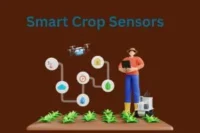No Soil, No Problem: Discover the Magic of Hydroponic Growing
Published: 25 May 2025
“I’ll be honest — when I first heard the word ‘hydroponics’, I had no idea what it meant. Was it some futuristic science experiment? Was it only for professionals or huge greenhouses? And how could plants possibly grow without soil? It sounded complicated, expensive, and way out of my league. But something about it kept pulling me in — the promise of growing fresh food, right at home, with no dirt, no pesticides, and hardly any water. If you’ve ever felt the same confusion or hesitation, you’re not alone. This guide will walk you through everything you need to know — clearly, simply, and step by step — so you can decide if hydroponics is right for you.”
So, guys, without wasting time, let’s jump into the article to learn the pros and cons of the internet.
What Is Hydroponics?
Hydroponics is a method of growing plants without soil by using a water-based solution rich in nutrients. Instead of soil, plants are supported by inert mediums like clay pellets, rockwool, or coco coir. This system allows precise control over the plant’s environment, resulting in faster growth and efficient resource use.

Hydroponics = Soilless plant-growing method.
Uses a nutrient-rich water solution.
Roots are supported by inert growing media (e.g., clay, rockwool).
Enables controlled, efficient plant growth.
Commonly used in indoor or controlled farming environments.
Why Hydroponics Is the Smart Choice for the Future
- Emphasize efficiency, sustainability, and control.
- Benefits:
- Uses up to 90% less water than traditional farming.
- Can grow year-round, regardless of climate.
- Ideal for urban environments and small spaces.
- No need for harmful pesticides.
Real People. Real Impact. Stories That Will Inspire You
- Share short case studies or testimonials:
- A young entrepreneur builds a hydroponic farm on a rooftop.
- A teacher grows hydroponic veggies in a classroom for students.
- A retired couple saves money and eats healthier by growing at home.
How Hydroponics Works
- Explain the technical process simply:
- Nutrient solution → delivered directly to roots → faster growth.
- Control over pH, EC (Electrical Conductivity), oxygen, and light.
- Mention key components:
- Reservoir, water pump, air pump, grow lights, net pots.
Top 5 Crops That Thrive in Hydroponic Systems
- Highlight beginner-friendly and profitable crops:
- Lettuce – fast-growing and highly popular.
- Basil – compact, high-value herb.
- Strawberries – delicious and profitable.
- Tomatoes – great for home or commercial.
- Spinach – nutrient-dense leafy green.
- Tips on what grows best in different system types.
Is It Worth It?
- Be transparent about costs:
- Initial setup (small kit vs commercial setup).
- Monthly expenses (electricity, nutrients).
- Show long-term savings:
- Lower grocery bills.
- Higher crop yields.
- ROI for home use and small farms.
What You Need to Build Your Own Hydroponic System
- Step-by-step guide for beginners:
- Choose a system type (e.g., DWC, NFT, Drip).
- Buy or DIY: kit vs homemade.
- Essentials: reservoir, air pump, grow lights, medium, nutrients.
- Common mistakes to avoid.
Can You Make Money with Hydroponics?
- Discuss the business potential:
- Sell to local restaurants or farmers markets.
- Offer subscription boxes or microgreens.
- Target niche crops: herbs, baby greens, edible flowers.
- Tips for starting small and scaling.
Why You’ll Fall in Love with Growing Your Own Food
- Emotional benefits:
- Peace of mind knowing your food is clean.
- Joy of watching plants grow daily.
- Family bonding – get kids involved.
- Lifestyle improvement:
- Stress relief, mental health, eco-pride.
Start Your Hydroponic Journey Today
- Strong call to action:
- “Don’t wait – grow your first plant today!”
- “Download our free hydroponics starter guide.”
- “Join our community of indoor growers.”
- Encourage sharing and signups.
FAQs about Hydroponics
Here are some of the most frequently asked questions about the Hydroponics.
Yes, hydroponics is a general method, but there are several system types under it. Each one delivers water and nutrients to plants in a different way.
Plants don’t actually need soil—they need nutrients, water, oxygen, and light. Hydroponic systems deliver those nutrients directly to the roots using water instead of soil.
They’re similar but not the same. In Deep Water Culture (DWC), plant roots are submerged in nutrient-rich water, while in Nutrient Film Technique (NFT), a thin film of water flows over the roots in a shallow channel.
Each type is designed for different space sizes, crop types, and budgets. Some systems are simpler for beginners, while others are better for commercial setups.
Not necessarily! Some types like Wick systems or DIY DWC setups are low-cost and beginner-friendly. Others like aeroponics are more high-tech and pricier.
Aeroponics is actually an advanced type of hydroponics. Instead of water flowing or sitting, it mists the roots with nutrients in the air—still no soil involved.

- Be Respectful
- Stay Relevant
- Stay Positive
- True Feedback
- Encourage Discussion
- Avoid Spamming
- No Fake News
- Don't Copy-Paste
- No Personal Attacks

- Be Respectful
- Stay Relevant
- Stay Positive
- True Feedback
- Encourage Discussion
- Avoid Spamming
- No Fake News
- Don't Copy-Paste
- No Personal Attacks





